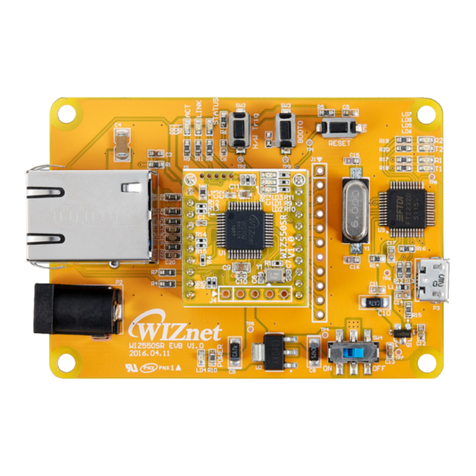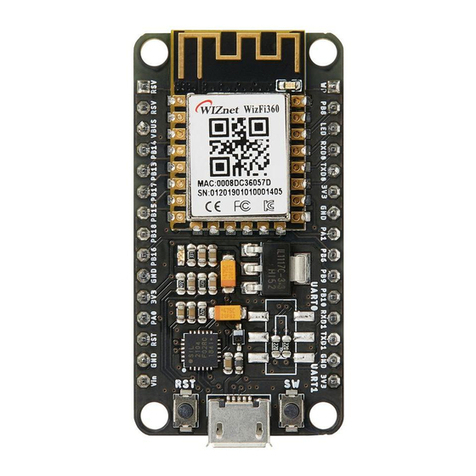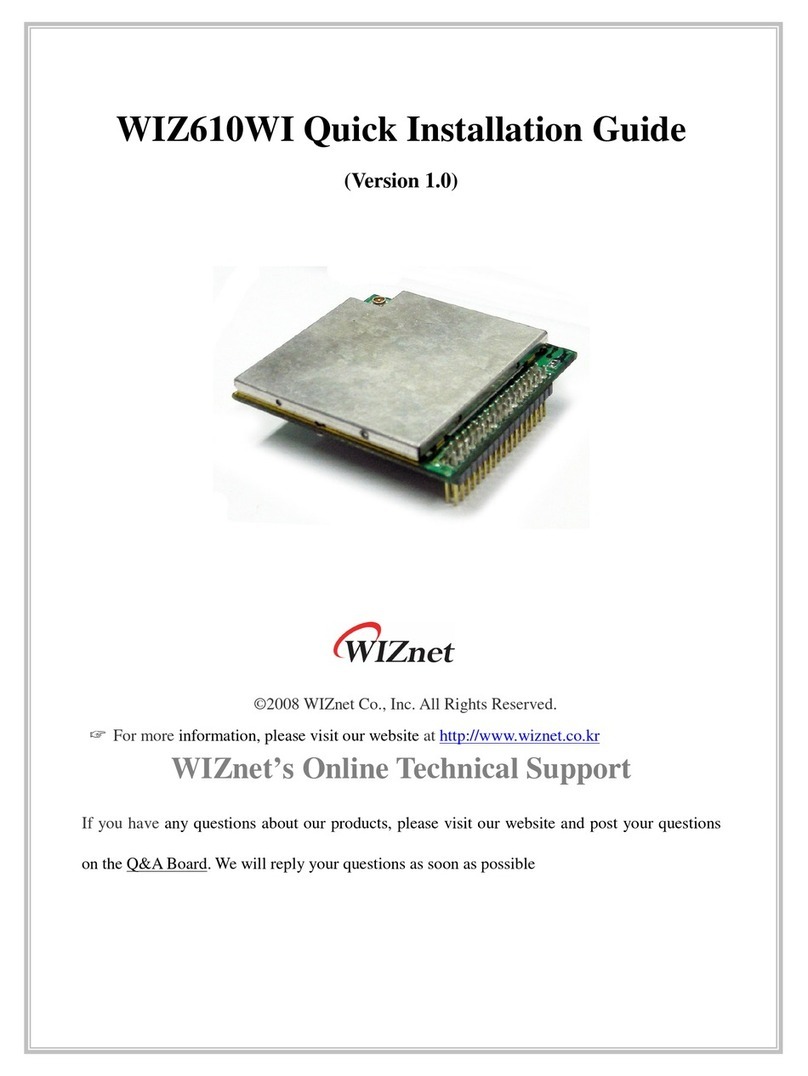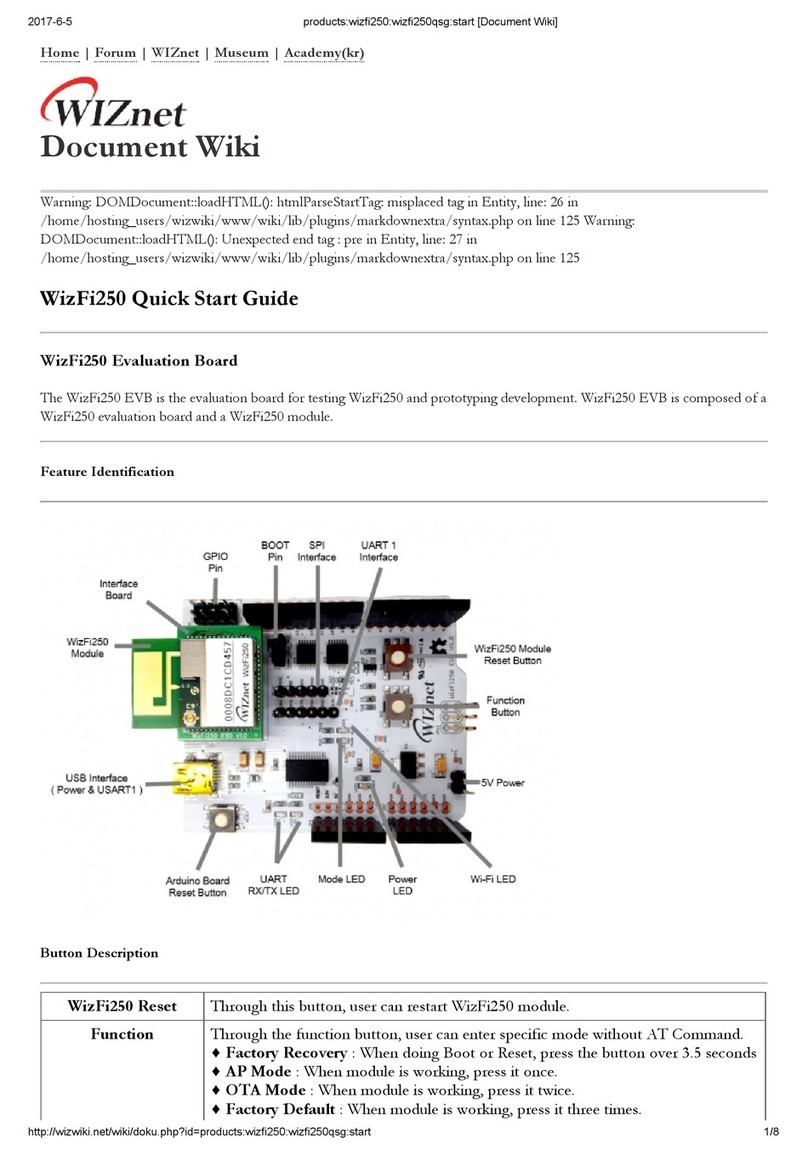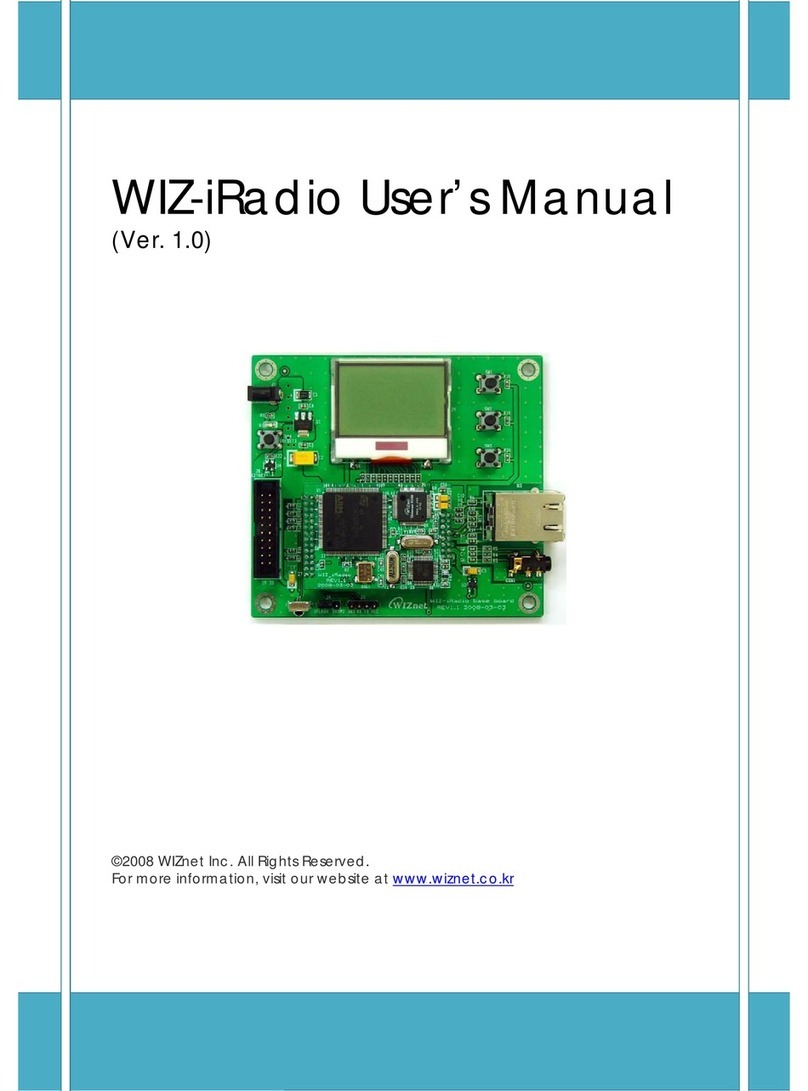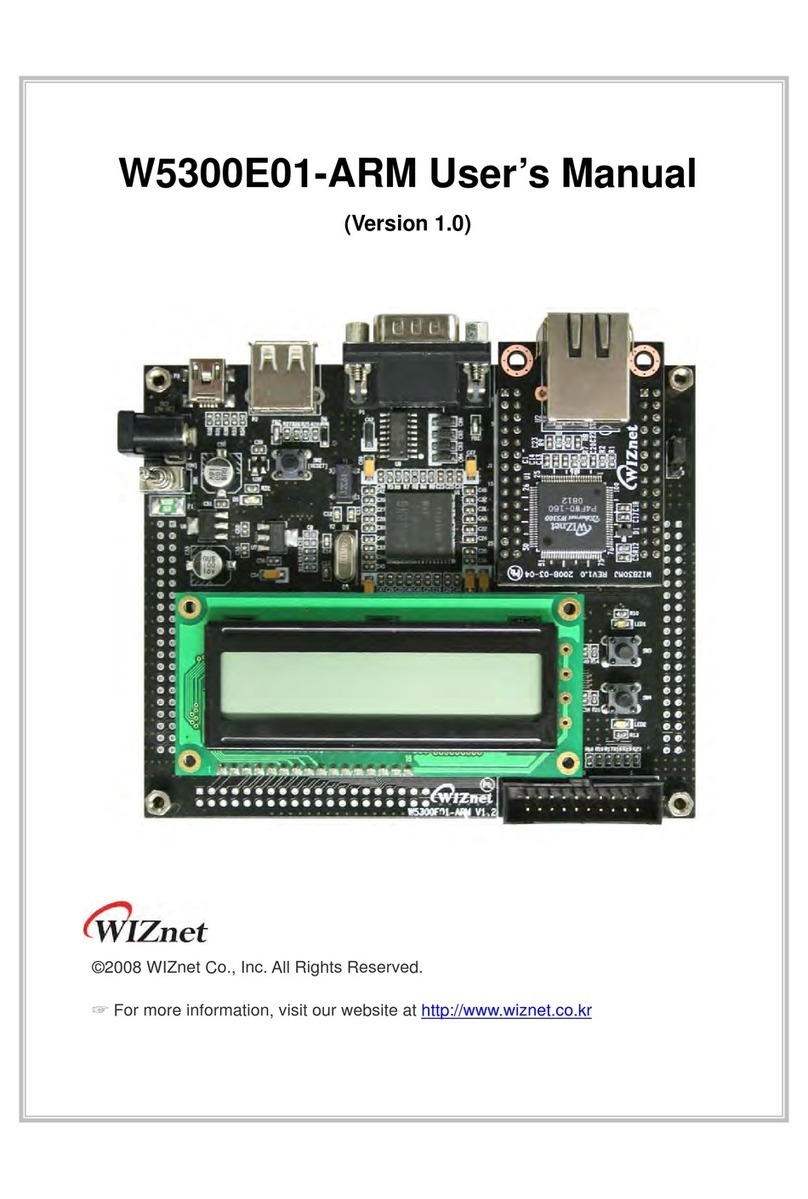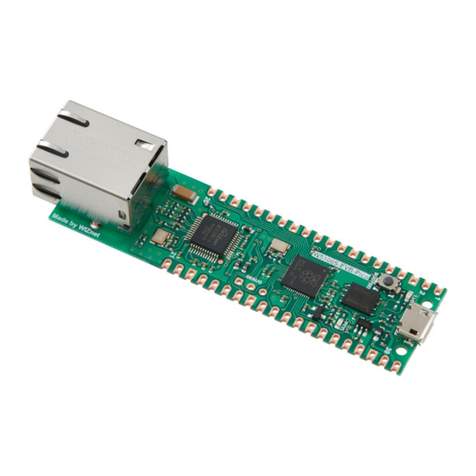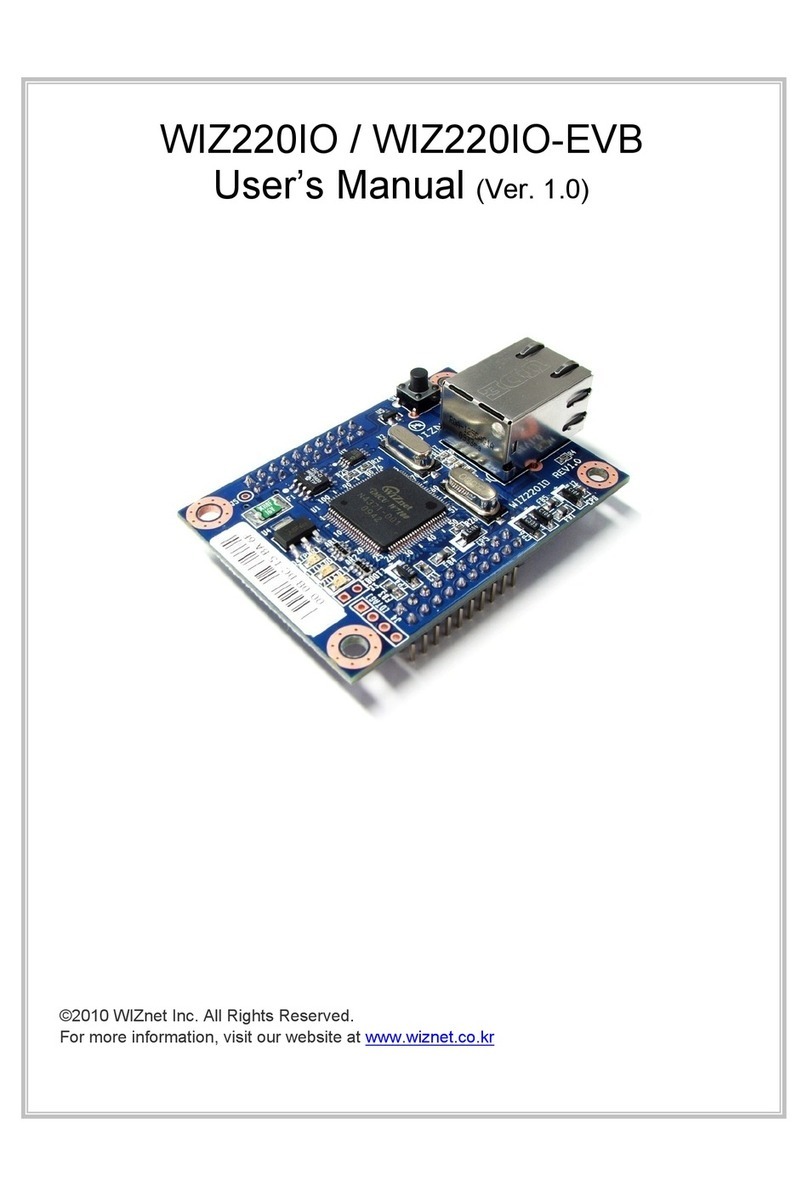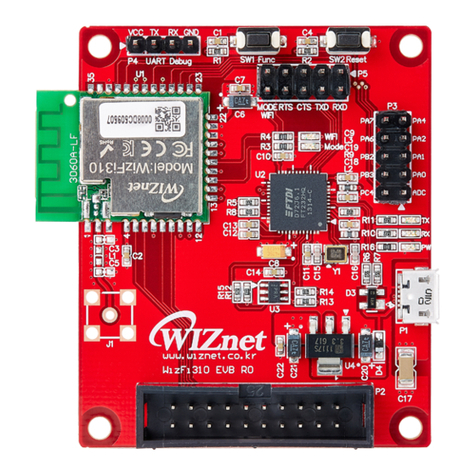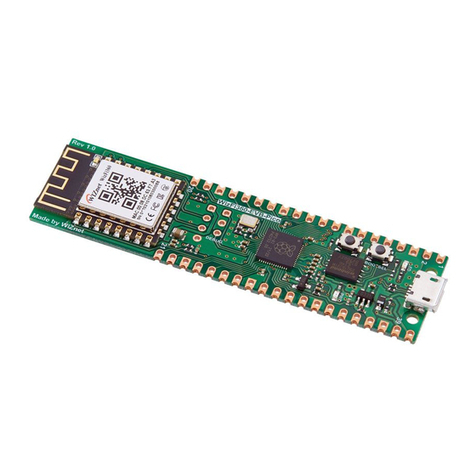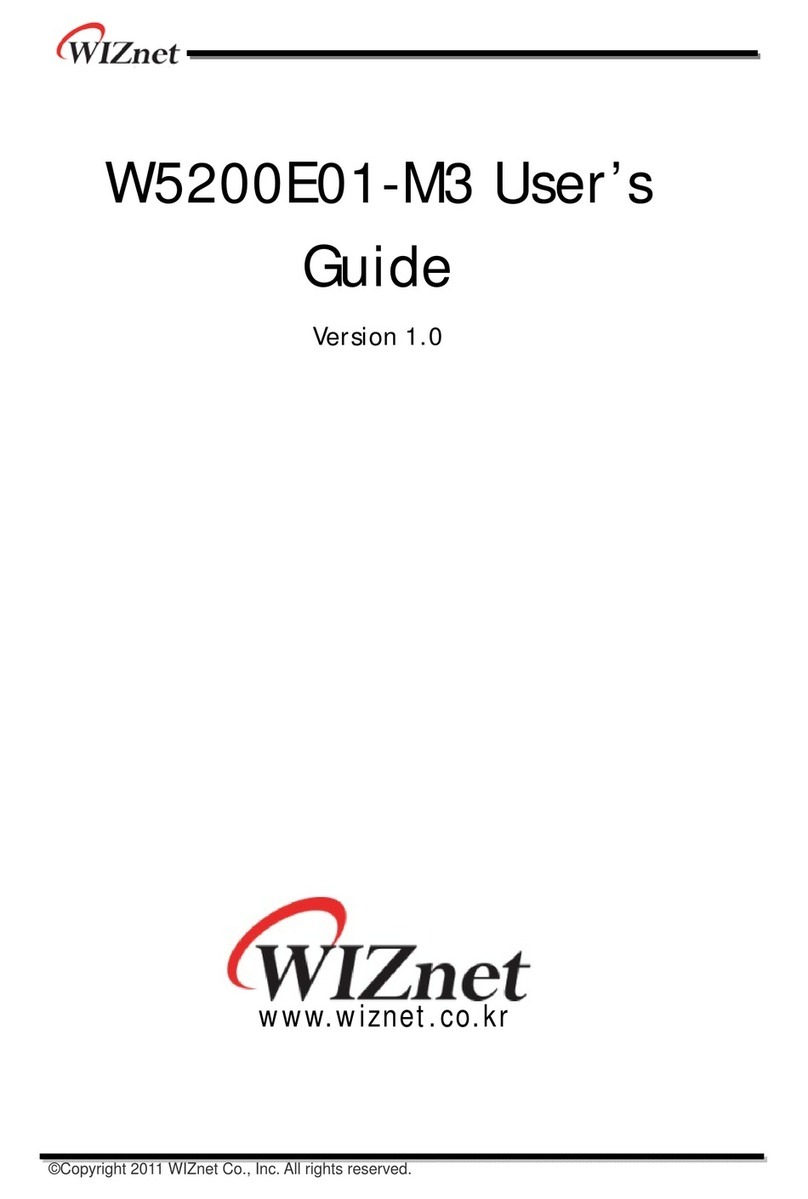W5100E01-AVR User’s Manual vii
Figures
<FIG 2.1 :EVB B/D JUMPER SETTING>.....................................................................................................3
<FIG 2.2 :JP3 JUMPER SETTING >.............................................................................................................3
<FIG 2.3 :EVB B/D TEXT LCD DISPLAY >.................................................................................................5
<FIG 2.4 :OUTPUT OF TERMINAL PROGRAM>............................................................................................6
<FIG 2.5 :EVB B/D PING REPLY TEST >....................................................................................................6
<FIG 2.6 :MANAGE PROGRAM EXECUTION >.............................................................................................7
<FIG 2.7 :NETWORK CONFIG >...................................................................................................................8
<FIG 2.8 :SOURCE IPADDRESS SETUP EXAMPLE>..................................................................................9
<FIG 2.9 :MACADDRESS SETUP EXAMPLE>.............................................................................................9
<FIG 2.10 :MENU OF CHANNEL CONFIG>................................................................................................10
<FIG 2.11 :LOOPBACK TCP CLIENT APPLICATION SETTING EXAMPLE>.................................................11
<FIG 2.12 :USAGE OF PING APPLICATION >.............................................................................................12
<FIG 2.13 :PING APPLICATION TEST>......................................................................................................13
<FIG 2.14 :DHCPCLIENT TEST>.............................................................................................................14
<FIG 2.15 :LOOPBACK TCPSERVER TEST>...........................................................................................15
<FIG 2.16 :LOOPBACK TCPCLIENT>.......................................................................................................15
<FIG 2.17 :LOOPBACK UDPTEST>.........................................................................................................16
<FIG 2.18 :WEB SERVER TEST>..............................................................................................................16
<FIG 2.19 :DEFAULT WEB PAGE OF EVB B/D>.......................................................................................17
<FIG 2.20 :WEB PAGE OF EVB B/D CONTROL>.....................................................................................17
<FIG 3.1: EVB B/D MEMORY MAP>.........................................................................................................19
<FIG 3.2:AVR INTERNAL EEPROM MAP>..............................................................................................20
<FIG 3.3: EVB B/D’S MAIN()>..................................................................................................................32
<FIG 3.4: CHECK_MANAGE()>...................................................................................................................33
<FIG 3.5: MANAGE_CONFIG()>..................................................................................................................34
<FIG 3.6: MANAGE_NETWORK()>..............................................................................................................36
<FIG 3.7: MANAGE_CHANNEL()>...............................................................................................................38
<FIG 3.8: PING_REQUEST()>.....................................................................................................................40
<FIG 3.9: PING_REQUEST() –CONTINUE>................................................................................................41
<FIG 3.10: ICMPMESSAGE VS PING MESSAGE>...................................................................................42
<FIG 3.11: PING()>.....................................................................................................................................45
<FIG 3.12: DISPLAYPINGSTATISTICS()>....................................................................................................46
<FIG 3.13: SENDPINGREPLY()>................................................................................................................47
<FIG 3.14 :LOOPBACK_TCPS() >.............................................................................................................49

